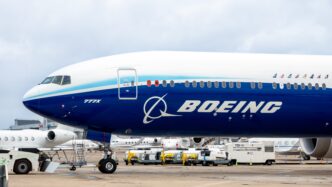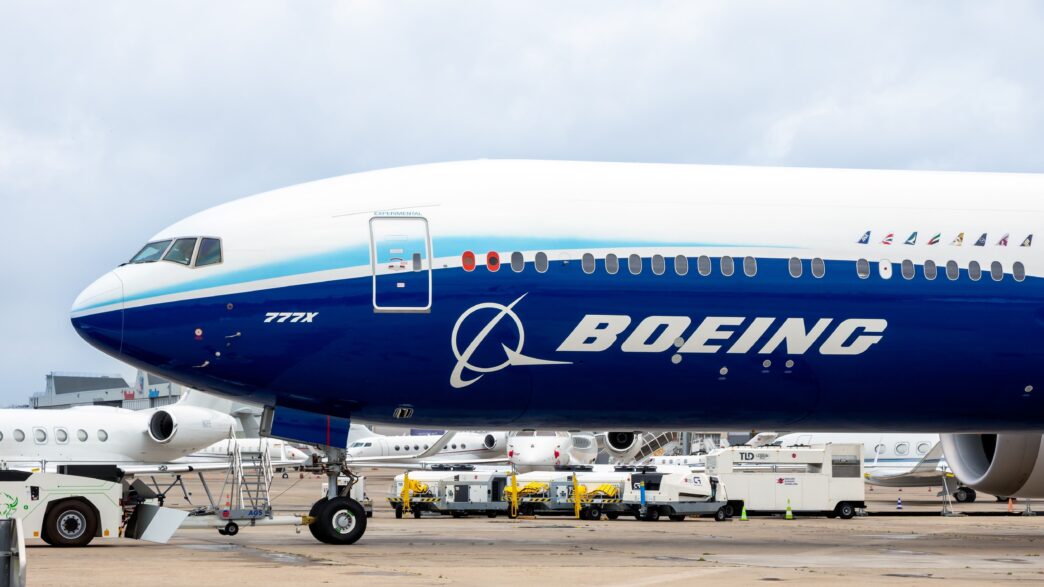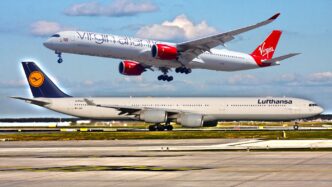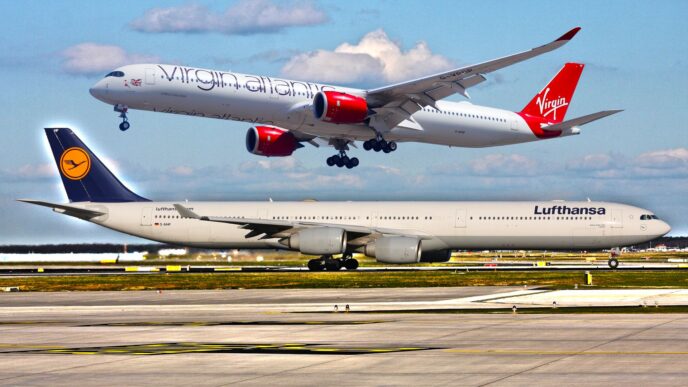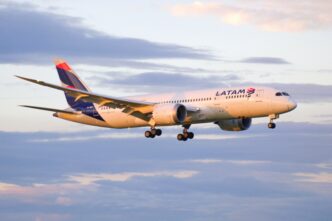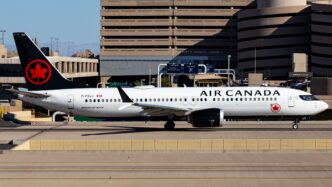The Boeing 777X prototype, known as WH001/N779XW, recently touched down in Victorville to kick off a series of takeoff performance tests with the Federal Aviation Administration (FAA). Aviation enthusiasts, particularly those who follow the B777X, spotted the massive aircraft on the morning of August 14. These tests are crucial for confirming that the 777-9 meets FAA standards for safe and reliable operation across various runway and environmental conditions. Both Southern California Logistics Airport (VCV) and Edwards Air Force Base (EDW) will serve as testing grounds. The FAA will be closely examining the aircraft’s acceleration, rotation, and climb capabilities, with a focus on VMU, which determines the minimum speed at which the plane can safely take off.
The Boeing 777X program has faced its share of challenges, with initial deliveries pushed from 2020 to a projected 2026. This delay stems from several factors, including issues with the new GE9X engines—the largest turbofans ever built—the impact of the COVID-19 pandemic, and regulatory scrutiny following the 737 MAX incidents. After the tragic crashes involving Ethiopian Airlines and Lion Air, the FAA was tasked with reviewing Boeing’s safety management processes under the 2020 Aircraft Certification, Safety, and Accountability Act (ACSAA). An Expert Review Panel, featuring members from NASA, the FAA, labor unions, and other stakeholders, began its work in 2023 and released its findings in 2024.
Boeing’s president and CEO, Kelly Ortberg, highlighted the company’s ongoing efforts to bring the 777X to market in a recent performance report. He emphasized the importance of strengthening safety and quality, noting that these changes are yielding positive results. As Boeing navigates a complex global landscape, the focus remains on rebuilding trust and making steady progress toward recovery. The FAA continues to oversee Boeing’s certification programs to ensure long-term commitment to safety and quality.
#Boeing777X #AviationNews #FAA #AircraftTesting #AerospaceInnovation
Originally reported by Simple Flying Read More
